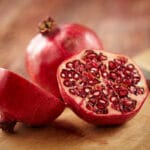Unlocking the Flavor and Benefits of Tarragon
Tarragon – it might sound like a word whispered in a fancy restaurant, but this little herb is a flavor powerhouse with potentially surprising health benefits. Let’s explore the world of tarragon and uncover its hidden potential in the kitchen and beyond.
Beyond the Spice Rack: Tarragon’s Unique Character
If you’ve ever savored the creamy delight of Béarnaise sauce, you’ve experienced tarragon’s magic. Its distinctive, slightly sweet, anise-like flavor adds a touch of elegance to dishes. But tarragon’s versatility extends far beyond upscale cuisine. It beautifully complements chicken, fish, asparagus, eggs, and more, lending a subtle peppery kick to these simple ingredients.
More Than Just Flavor: Tarragon’s Potential Health Benefits
While more research is always welcome, early studies suggest that tarragon might offer more than just culinary delight. Packed with antioxidants, tarragon could act as a cellular bodyguard, protecting your body from damage.
Scientists are also exploring tarragon’s potential antimicrobial properties, and some research even suggests it might help regulate blood sugar levels. Traditional wisdom points to additional benefits like improved digestion, reduced inflammation, and a sense of calm. While these claims require further investigation, the early research on tarragon is certainly promising.
Cultivating Your Own Tarragon: A Gardener’s Delight
Want fresh tarragon at your fingertips? Growing your own is surprisingly simple! This herb thrives in sunny spots with well-drained soil. You can start from seeds or propagate new plants from cuttings of existing ones. Soon you’ll be snipping fresh tarragon leaves to elevate your culinary creations.
DIY Delights: Tarragon Vinegar and Beyond
Looking for creative ways to incorporate tarragon into your cooking? Homemade tarragon vinegar is an easy and delicious option! Simply infuse white wine vinegar with fresh tarragon sprigs, and voilà – you have a flavorful addition to salads, marinades, and more. For adventurous mixologists, tarragon adds a unique twist to cocktails as well.
A Taste of History: Tarragon Through the Ages
Tarragon’s distinct flavor sets it apart from its botanical cousin, anise, though they share some similarities. Intriguingly, tarragon boasts a rich history, with ancient civilizations incorporating it into both culinary and medicinal practices.
So, the next time you’re seeking a special touch for your meals, consider tarragon. This tiny herb, with its bright, unique flavor and potential health benefits, might just become your new kitchen staple!
What is the Flavor of Tarragon?
Imagine a flavor that dances on your tongue, a bit like licorice but with a touch more mystery. That’s tarragon for you! It’s this unique blend of licorice and anise, sometimes even throwing in a hint of vanilla, that makes it so special.
Interestingly, the exact flavor can change depending on the type of tarragon. French tarragon, the most common variety, is known for its delicate anise notes. Russian tarragon, on the other hand, is bolder and more assertive, with a bit of a bitter edge.
The difference between fresh and dried tarragon is also worth noting. Fresh tarragon offers a subtle finesse, while dried tarragon packs a more potent punch of flavor. Some people even detect hints of mint or eucalyptus in certain tarragon varieties. Who knew one herb could hold so many surprises?
Unlocking Tarragon’s Culinary Versatility
Picking up a sprig of tarragon at the grocery store or farmer’s market opens up a world of culinary possibilities. This herb, with its delicate, slightly licorice-like flavor, is a staple in French cooking but deserves a spot in kitchens around the world.
Cooking with Finesse: Tips for Using Tarragon
When it comes to using tarragon, fresh is best! Fresh tarragon bursts with flavor compared to its dried counterpart. Because its flavor is delicate, a little goes a long way, and it’s best added towards the end of cooking so it doesn’t get lost among other ingredients.
Tarragon is also a team player, pairing beautifully with herbs like parsley, chives, thyme, and rosemary. Don’t be afraid to experiment! Tarragon is delicious with chicken, fish, eggs, and vegetables, and it can be used to create flavorful sauces, dressings, and marinades.
Beyond Flavor: Tarragon’s Potential Health Benefits
Beyond its delightful flavor, tarragon has a long history of medicinal use. While scientists are still researching all its potential benefits, here’s what we’re learning:
Possible Health Benefits of Tarragon
| Benefit | Explanation |
|---|---|
| Antioxidant Power | Tarragon contains compounds that may help protect our cells from damage caused by free radicals. |
| Fighting Inflammation | It may also play a role in reducing inflammation in the body. |
| Appetite Control | Some studies even suggest that tarragon could help regulate appetite. |
| Better Sleep | There’s also some early evidence that tarragon might help improve sleep patterns. |
| Blood Sugar Balance | And it may even have a positive effect on blood sugar levels. |
Important Note: It’s essential to remember that research on tarragon’s health benefits is ongoing, and these findings are still preliminary. Always consult your doctor before using herbs like tarragon medicinally, especially if you’re taking any medications.
Exploring Tarragon’s Diverse Applications
While cooking and potential health benefits take center stage, tarragon’s uses extend beyond the culinary realm. Dried tarragon adds a lovely fragrance to potpourris and sachets, and some people believe it acts as a natural insect repellent.
A Final Word on Tarragon’s Allure
From elevating dishes with its delicate anise-like flavor to its potential health benefits, tarragon deserves a place of honor in your culinary repertoire. Don’t hesitate to experiment and discover the many ways this remarkable herb can enhance your life.
What is Tarragon in the UK?
Tarragon, a beloved herb practically synonymous with British kitchens, adds unique flavor and excitement to a variety of dishes. This perennial herb, belonging to the sunflower family, thrives in the UK’s temperate climate.
In the UK, “tarragon” generally refers to French tarragon, the most prized variety. It is celebrated for its subtle aniseed-like flavor that adds a touch of sweetness and complexity to cooking. While Russian tarragon is also available, it’s not as flavorful and is often relegated to medicinal uses.
Picture a sunny UK garden; amidst the vibrant greenery, you spot a thriving patch of tarragon. This herb loves the sun and requires well-drained soil and regular watering. Once established, it is relatively low-maintenance. Gardeners can even grow tarragon from cuttings or by dividing the roots.
Tarragon truly shines in French cuisine, gracing dishes like the iconic Béarnaise sauce. But don’t underestimate its versatility! Tarragon brightens everything from chicken and fish dishes to egg preparations, salads, and even homemade vinaigrettes.
What’s even more exciting is that adventurous cooks across the UK are incorporating tarragon into a wider range of cuisines, going beyond the classic French pairings. Its unique flavor is now popping up in Italian and Mediterranean-inspired dishes, adding an intriguing twist that has captured the attention of food enthusiasts.
But wait, there’s more to this unassuming herb! Some studies suggest that tarragon might promote good digestion and may even provide a mood boost thanks to its antioxidant properties. Keep in mind that research is ongoing, but the possibilities are certainly intriguing.
Ready to incorporate tarragon into your cooking? You’re in luck! Fresh tarragon is readily available in most UK supermarkets, especially during its peak season. Dried tarragon is also an option, though its flavor might be milder. And for those with a green thumb, why not try growing your own? Tarragon plants can be found at garden centers or online, allowing you to have your very own herb garden at your doorstep!
Internal links incorporated into the text:
- The snowdrop flower is a symbol of hope and new beginnings, as it is one of the first flowers to bloom in spring.
- In contrast, the subarctic evergreen forest is a cold, dark, and unforgiving place, where few plants can survive.
- Crypto Quotes’ Red Flags: Avoid Costly Mistakes - June 30, 2025
- Unlock Inspirational Crypto Quotes: Future Predictions - June 30, 2025
- Famous Bitcoin Quotes: A Deep Dive into Crypto’s History - June 30, 2025















